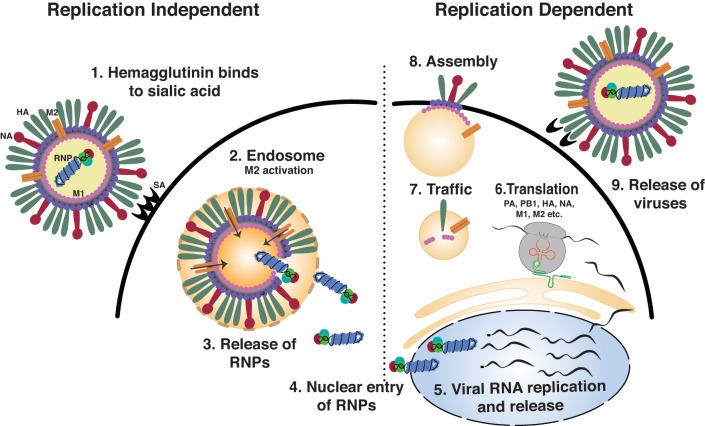Fig. 2.
Influenza virus replication cycle (1). Hemagglutinin binds to sialic acid residues at the plasma membrane (2). Influenza virus is internalized and tracked to the endosomes. Low pH in the endosome activates M2, which transports protons to the interior of the virion, causing viral ribonucleoprotein (RNP) to dissociate from the virion. Simultaneously, fusion of the hemagglutinin to the endosomal membrane, also initiated by low pH, allows the virions to track into the cytosol (3). Viral RNPs are released (4). Viral RNP is tracked to the nucleus (5). Viral RNA produces cRNA, which encodes new viral genome (vRNA) and mRNA (6). Viral mRNA is translated in the cytosol using host machinery (7). vRNA and viral proteins are tracked to the cell surface (8). Viral assembly and budding from the cell surface occurs (9). Neuraminidase cleaves sialic acid residues from the surface of the cell to allow the virus to detach and infect new host cells.

